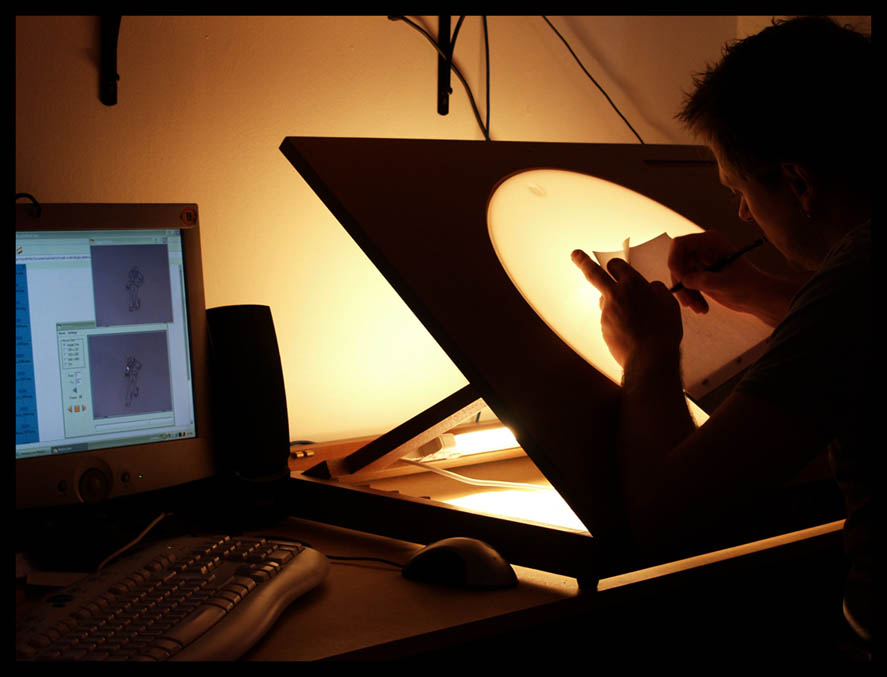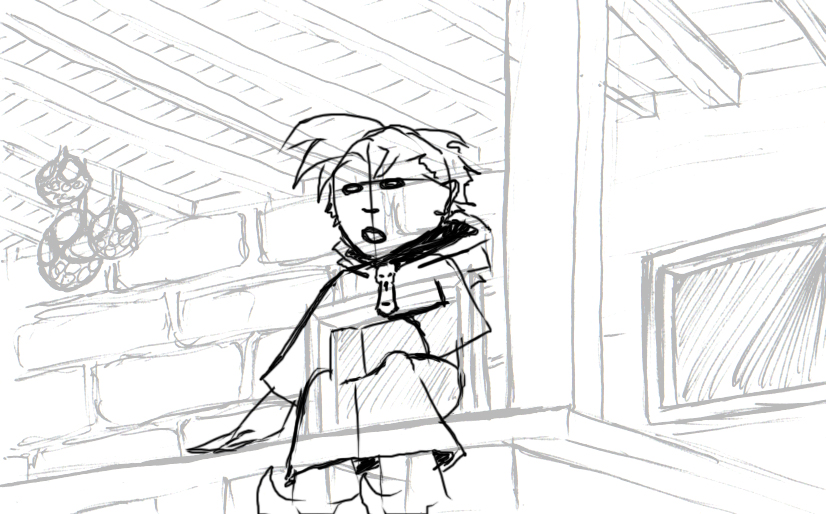
The Protagonists concept in a previous iteration of the story.
Why defining an artistic style is important
The world of Breaching the Rift has been a long time in the making, though a definitive art style has never been locked down. From the miniature designs to the character concept sketches, most of the art has been quite sketch-like to get an idea down instead of a finalised look. This project is where this is going to have to change, as animation needs consistency to make the whole production coherent. That is unless you are intentionally going for that look, which the project will not be.
No matter what animated film you watch, whether it is a short student film or a long format big studio production, there is a unifying art style to the animation. Though this is not being produced in a studio with multiple people it needs to be treated as such so that anyone who may become involved in the future can just jump in and crack on. The lead animators, key frame artists, inbetweeners and clean-up artists all need to be singing from the same proverbial hymn book. This all needs to be decided from the start. However, before all that the medium needs to be decided. Is it going to be 2D, 3D or stop motion animation? A choice that will influence the style amongst other things.
The pro’s and con’s of techniques
As mentioned previously there are three techniques that were considered for this animation project. Hand drawn or digital 2D, digitally made 3D or hand made stop motion. Two of these would mean reviving skills that haven’t been used for a while and the third, though the fundamentals have been used a lot over the last several years, would have a lot of learning new skills to make come to life. Before we choose which one we’re going to use, lets break it down.

The creator of Snowblind working on a traditional 2D animation on a lightbox, circa 2007.
2D Animation
The pros
- There are lots of free to use animation programs out there (that are already installed and ready to use).
- 2D animation as a skill is already available for the project, with some practicing needed to get up to speed.
- Essentially everything is available to start animating, tomorrow.
- Certain software available such as Moho (as just one example out of a myriad) can allow for “dolls” to be made, speeding up the animation process
The cons
- This project is being ran outside of a full-time job so will take longer to move forward frame by frame.
- It has been a long time since a full 2D production has been made which, again, will take a certain level of retraining to get up to speed.
- If 2D is chosen then the software chosen will impact the animation style such as do you do frame by frame or tween 2D puppets.
3D Animation
The pros
- It can look amazing, but (con) also look cheap if not done right.
- The modelling and sculpting skills are available straight away.
- Changing a mistake in animation would be as simple as editing the keyframes instead of having to redraw the frames.
The cons
- This would be a first working on a full animation with little prior experience.
- There would be a very steep learning curve

Aegis, from the stop motion animated short of the same name.
Stop Motion Animation
The pros
- Looks amazing when animated well.
- Prior experience with the techniques.
- All the relevant paid for software is available.
- All rigs, stands and lights are available.
- Armatures (ball & socket or wire) can be made from scratch in-house on a Mill.
the cons
- The cost of this could be prohibitive
- Time intensive making the puppets and scenery
- If you make a mistake or the camera is knocked you won’t be fixing it in post-production, you’ll be starting the shot from the beginning (in most cases). Speaking from personal experience.
- Space required to make the production may be prohibitive, and is not immediately available.
When you look at just these pros and cons the stop motion option, though it would be amazing to make, costs itself out of the running both financially and resource wise (including the space limitation). However, this doesn’t mean that it would be a non-option in the future, though not for this project. As far as the 3D animation option is concerned the steep learning curve is a concern as It may be a big blocker and cause the project to stall. It would look amazing, but it may be a a technique for a a different project and a larger team. This leaves 2D as the most available and viable for this project. There would be no financial setup and it could literally start production straight away if all of the pre-production work was out of the way. Which, leads us on to the next topic.

A rough storyboard from a previous animation project called Cold Storage C. 2005
The preproduction void
Pre-production can sometimes feel like a bit of a slog and so many projects fail before they get to the production stage. This is where you have to be disciplined and take it bite by bite. Especially if you are working on what is essentially a solo project. Breaking it down into mini projects is a good way to keep focus and also helps to keep you prepared for the world of real life freelancing (if you were to gingerly take a step into that world) where you would be working on a small part of the whole. This is also the point where we decide on how the animation is going to look. Do we go full on Cartoon Network Saturday morning, Classic Disney, lean more towards the style of Studio Ghibli or A1-Pictures? Or do we go some hybrid like either Arkane Studios Arcane series or Disneys Treasure Planet?
Whichever is eventually settled upon it’s going to be a lot of work and iteration. Yes, there has already been work done on this, but it needs to be refined much more before the project switches track into the production phase. It’s both a tantalising and scary thought to process, making this film. However, nothing worth doing is easy, and the fear is a good thing. Time to rain it in and turn it into drive and make Snowblind a reality.

